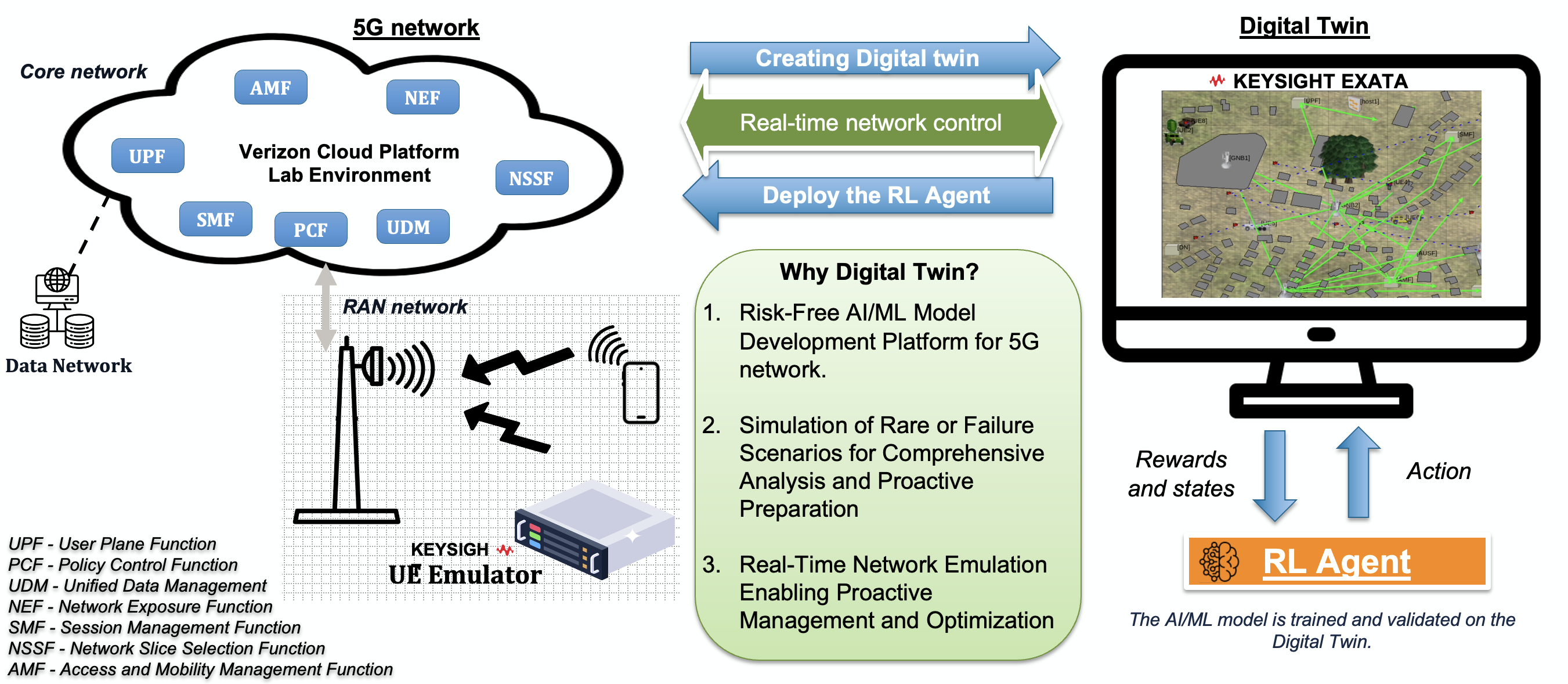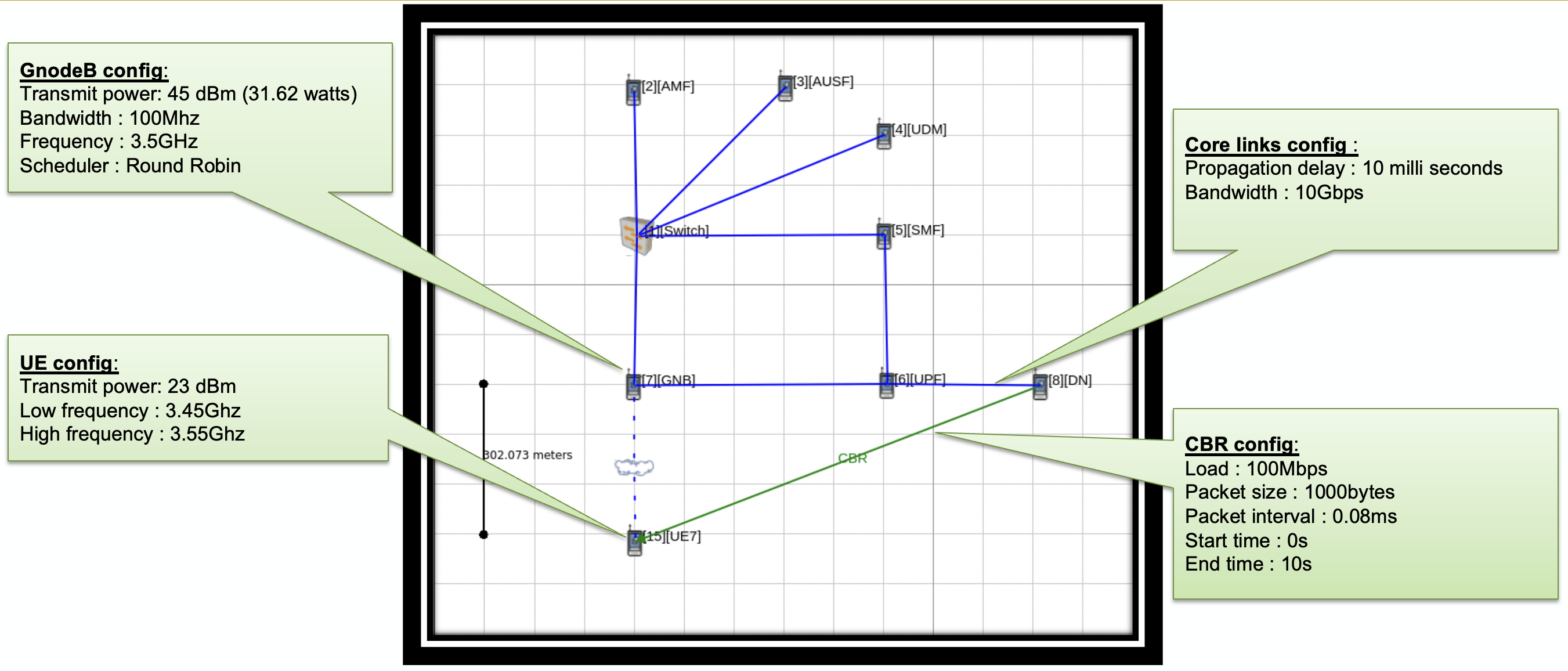5G Digital Twin
Project Description
This project is dedicated to providing a robust platform for developing and validating
cutting-edge solutions within the 5G cellular network domain, including the multi-source fusion
of data in C-V2X networks and the application of Reinforcement Learning (RL) algorithms for
dynamic optimization. These solutions are tailored to adaptively respond to fluctuating Quality
of Service (QoS) demands and resource needs. At the heart of this initiative is the construction
of a digital twin of the 5G network, which meticulously replicates the Verizon 5G lab
environment. This simulated framework not only facilitates rigorous analysis but also ensures
that all architectural and operational characteristics are precisely aligned with those of the
actual lab environment, thereby providing a foundation for detailed data analysis and
performance benchmarking. Through this platform, the project aims to drive the effective
development and validation of AI/ML solutions, ensuring these technologies can significantly
contribute to the sophistication and adaptability of 5G network strategies.
Verizon Lab Digital Twin Testbed
In partnership with Keysight Technologies, and Verizon, this initiative utilizes the Exata platform
to develop highly accurate digital twins of existing 5G networks. The network architecture in the
digital twin encompasses elements such as the AMF, AUSF, SMF, UPF, and DN, integrated with a
RAN network that includes a GnodeB and two UEs. This setup is crucial for simulating realistic
wireless channel models and traffic patterns, which are essential for the subsequent data
analysis phase.

Data Analysis to Identify Real-to-Simulation Gaps
Our ongoing analysis of 5G network performance under various traffic conditions (CBR and FTP)
is essential for tuning our key performance indicators—latency, throughput, packet loss, jitter,
and buffering rate. Through time series and histogram analyses, we're pinpointing trends and
understanding how different loads and UE numbers affect network performance. Initial trends
indicate a significant inverse correlation between latency and throughput, with increased traffic
exacerbating jitter and packet loss. These insights from statistical testing are crucial for guiding
our network optimization strategies. As we progress, we aim to minimize the discrepancies
between our digital twin simulations and real Verizon 5G lab data. This gap analysis is not only
pivotal for refining our simulation models but also sets the foundation for developing and
implementing an AI/ML algorithm. By understanding these gaps, we can better predict how
AI/ML solutions might differentially impact network performance in simulated versus real
settings, thereby enhancing the accuracy and efficacy of our AI-driven optimization strategies.

